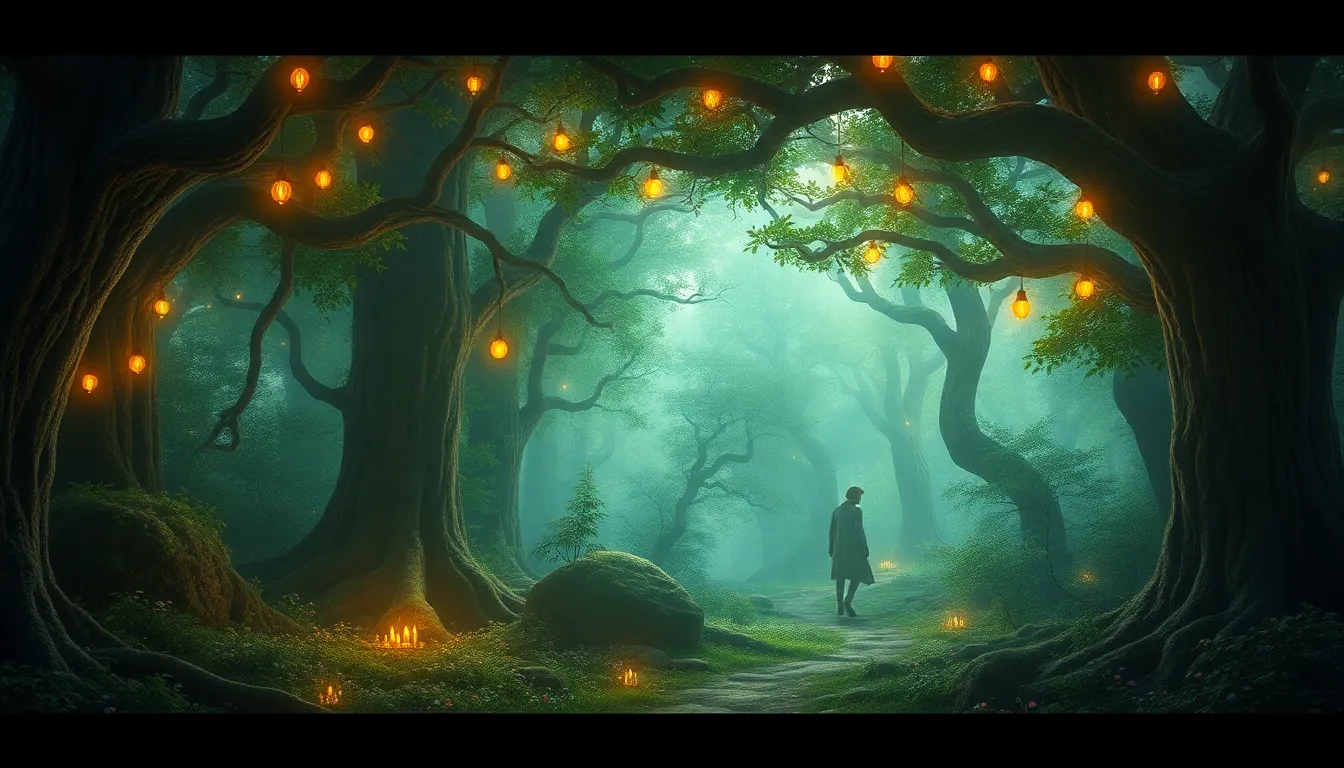Exploring the Enchanted Forest: A Guide to Its Myths
Introduction to the Enchanted Forest
The concept of the enchanted forest has captivated the human imagination for centuries. Defined as a mystical and magical woodland, these forests are often depicted in folklore and fairy tales as places of wonder, danger, and transformation. Culturally, enchanted forests serve as metaphors for the unknown, the subconscious, and the interplay between nature and humanity. Common themes in enchanted forest myths include the presence of magical beings, the duality of beauty and peril, and the journey toward self-discovery.
Historical Origins of Enchanted Forest Myths
Enchanted forest myths have ancient origins, deeply rooted in the folklore of various cultures around the world. Forests have long been seen as mysterious realms, where the rules of the everyday world do not apply. They serve as settings for adventure, spiritual journeys, and encounters with the divine.
Notable cultures with rich forest mythology include:
- Celtic Mythology: Enchanted forests are central to many Celtic legends, featuring druids and mystical creatures.
- Native American Folklore: Many Native American tribes regard forests as sacred spaces, filled with spirits and wisdom.
- Slavic Mythology: The Slavs depict enchanted forests inhabited by a variety of beings, including the infamous Leshy, a forest spirit.
Fabled Creatures of the Enchanted Forest
One of the most enchanting aspects of forest mythology is the array of mythical beings that inhabit these woods. Each creature holds its own significance and is often associated with specific legends.
- Fairies: Often depicted as delicate beings, fairies are known for their magical powers and mischievous nature. They sometimes help or hinder human travelers.
- Elves: In many myths, elves are portrayed as wise and powerful beings, skilled in magic and archery, often living in harmony with nature.
- Dryads: These tree spirits are said to inhabit individual trees, embodying the essence of the forest itself. Cutting down a tree can mean the death of a dryad.
The Role of Nature in Enchanted Forest Myths
Nature plays a pivotal role in enchanted forest myths, serving as both a backdrop and a character in its own right. The symbolism of trees, plants, and animals in folklore conveys deep meanings:
- Trees: Often symbolize life, wisdom, and connectivity. They can represent the passage of time and the cycles of nature.
- Plants: Specific plants, like mandrake or wolfsbane, carry magical properties and are often linked to spells and potions.
- Animals: Creatures like wolves, owls, and deer may represent guides or omens within the narratives.
These natural elements often affect the narratives, influencing the fates of characters and the outcomes of their journeys.
The Enchanted Forest as a Setting for Transformation
Enchanted forests often serve as settings for personal growth and transformation. Many stories feature protagonists who venture into the woods, facing challenges that lead to profound changes. Common tropes include:
- Disappearance: Characters often lose their way or experience a metaphorical death, representing a break from their past.
- Re-emergence: After overcoming trials, characters often emerge renewed, with a deeper understanding of themselves and their place in the world.
These narratives highlight the transformative power of nature and the importance of embracing the unknown.
Famous Enchanted Forests Around the World
Several real-life forests are steeped in myth and legend, drawing visitors who wish to experience their enchantment:
- Broceliande Forest (France): Associated with Arthurian legends, this forest is said to be home to Merlin and the Lady of the Lake.
- Aokigahara (Japan): Known as the “Sea of Trees,” this forest has a rich cultural history and is often associated with ghost stories and folklore.
- The Black Forest (Germany): This dense forest is filled with tales of witches and fairytale characters, including those from the Brothers Grimm.
Each of these locations is imbued with unique myths and stories, inviting exploration and adventure.
The Intersection of Reality and Myth in Enchanted Forests
Enchanted forests are often inspired by real landscapes, where the beauty and mystery of nature give rise to mythological tales. Historical events, such as battles or natural disasters, can also shape the narratives surrounding these forests, weaving reality into the fabric of folklore.
For example, many enchanted forests have been the sites of significant cultural events or rituals, leading to the creation of myths that blend history with the supernatural.
Modern Interpretations and Adaptations of Enchanted Forest Myths
The influence of enchanted forest myths can be seen across various forms of media, from literature to film and art. Contemporary retellings often draw on traditional stories while infusing them with modern themes or perspectives.
Some notable examples include:
- Literature: Books like “The Night Circus” or “The Hazel Wood” offer modern takes on the enchanted forest trope.
- Film: Movies such as “Pan’s Labyrinth” and “Into the Woods” explore the complexities of human emotion through the lens of forest myths.
- Art: Visual art often depicts enchanted forests in surreal and imaginative ways, highlighting their mystical qualities.
These adaptations contribute to the ongoing cultural conversation about the significance of nature and mythology.
Exploring an Enchanted Forest: Tips for Adventurers
For those eager to explore real-life enchanted forests, here are some practical tips:
- Safety Tips: Always inform someone of your plans, stay on marked trails, and carry a map or GPS device.
- Best Times to Visit: Early morning or late afternoon often provide the best lighting for exploration and photography.
- What to Look For: Keep an eye out for unique plant life, animal tracks, and signs of mythical creatures in the folklore of the area.
Conclusion: The Enduring Magic of Enchanted Forest Myths
The myths of enchanted forests continue to resonate in today’s society, reminding us of the beauty and mystery of the natural world. They invite us to explore the unknown and appreciate the narratives that shape our understanding of nature and ourselves. As we venture into these magical realms, we are encouraged to embrace the stories they hold and the transformations they inspire.



